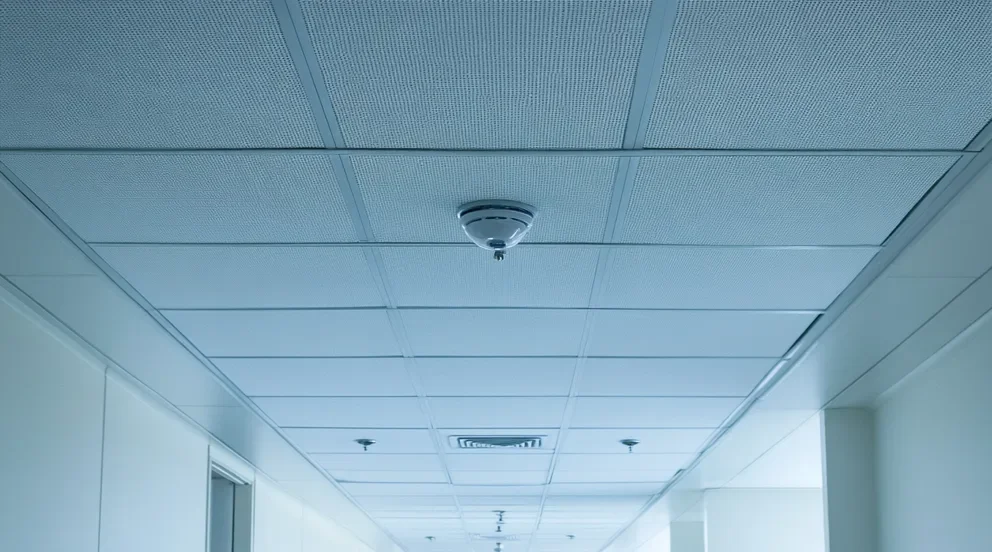Computerized Maintenance Management System (CMMS) Asset Management is a technology-driven approach that helps organizations optimize the use of their physical assets. This system uses computer software and hardware to collect, analyze, and manage data relating to an organization’s assets.
The primary function of a CMMS is to streamline maintenance processes. This is done by tracking and scheduling maintenance tasks, thus reducing instances of unplanned downtime. It also helps avoid costly repairs and replacements, contributing to the longevity of the assets.
CMMS Asset Management also plays a crucial role in inventory management. It tracks the quantity and location of spare parts, eliminating unnecessary purchases and saving costs. In addition, it helps in meeting compliance regulations by maintaining complete records of maintenance activities, inspections, and audits.
Another significant aspect of CMMS Asset Management is its ability to enhance decision-making. By providing real-time insights into asset performance, it guides organizations in making informed decisions about asset procurement, utilization, and retirement.
Moreover, CMMS encourages proactive maintenance. Instead of reacting to breakdowns, organizations can use predictive analytics to identify potential issues and address them before they escalate. This not only improves asset reliability but also enhances productivity.
In essence, CMMS Asset Management is a comprehensive tool that aids organizations in achieving operational efficiency. It ensures optimal utilization of assets, reduces maintenance costs, improves compliance, and enables informed decision-making. Therefore, it is an indispensable element in an organization’s asset management strategy.
How can CMMS Asset Management improve the efficiency of our maintenance operations?
CMMS Asset Management can significantly uplift the efficiency of maintenance operations. It offers a streamlined approach to managing and maintaining company assets. It eliminates the need for manual tracking, saving both time and effort.
Firstly, a CMMS allows for automated scheduling of preventative maintenance tasks. This mitigates the risk of equipment failure and extends the lifespan of assets. Thus, it helps in reducing unexpected downtime and boosts productivity.
Secondly, it provides complete visibility of assets, their condition, and maintenance history. It enables managers to get insights into asset performance and make data-driven decisions. This feature enhances the accuracy of planning and forecasting.
Moreover, a CMMS facilitates accurate inventory management. It helps in tracking spare parts and supplies, preventing stockouts or overstocking. This feature reduces unnecessary costs and improves the budgeting process.
The use of a CMMS also fosters enhanced communication and collaboration among the maintenance team. It provides a platform for real-time updates, ensuring everyone is on the same page. This feature bridges any communication gaps, promoting smoother operations.
Lastly, CMMS Asset Management aids in compliance with regulations. It provides accurate documentation of maintenance activities, which proves helpful during audits.
What types of assets can be managed using a CMMS?
A Computerized Maintenance Management System (CMMS) is a versatile tool that can manage a broad range of assets. These assets fall into several main categories.
First, CMMS can handle tangible physical assets. This includes machinery, equipment, vehicles, and buildings. Each of these assets has a life cycle, from acquisition to disposal, which a CMMS can track and manage efficiently.
Second, a CMMS can also manage intangible assets. These might include software licenses, intellectual property rights, or patents. By keeping track of these assets, businesses can ensure they are using them optimally and maintaining their legal compliance.
Third, CMMS is adept at managing infrastructure assets. These might be roads, bridges, pipelines, or other structures that are essential for the operation of a company. A CMMS can schedule maintenance to prolong the life of these assets and avoid costly repairs.
Lastly, the CMMS can manage human assets. These are the people employed by the organization. The system can keep track of tasks assigned, completed, and pending by each staff member, helping to improve productivity and efficiency.
Can CMMS Asset Management help in tracking the lifecycle of our assets?
Effective asset management is critical to the success of any business. With a Computerized Maintenance Management System (CMMS), companies can gain full control over their assets’ lifecycle. The system makes it easier to track each asset from procurement to disposal.
It begins with the acquisition phase where the system records the asset’s date of purchase, cost, and vendor information. From there, the system follows the asset into the operation phase. It records usage data, tracks performance, and schedules maintenance. Regular maintenance is crucial for extending the asset’s lifespan, preventing unplanned downtime, and optimizing operational efficiency.
When maintenance or repairs are needed, the system alerts the respective team members. This proactive approach prevents minor issues from escalating into major problems. Consequently, it saves the company from costly repairs or even asset replacement.
The CMMS also provides valuable data to aid in asset valuation. It keeps a record of all costs related to each asset, such as maintenance expenses, repair costs, and depreciation value. This information is crucial in ensuring accurate financial reporting and making informed business decisions.
Finally, when the asset reaches the end of its useful life, the system helps manage its disposal. It ensures the asset is disposed of in compliance with relevant regulations, and any residual value is recovered.
In essence, a CMMS provides complete transparency into the lifecycle of assets. It helps identify underperforming assets, track maintenance, calculate depreciation, and manage disposal. This enables companies to maximize their assets’ value, reduce costs, improve efficiency, and stay compliant with regulations.
Therefore, the answer is yes, CMMS Asset Management can significantly assist a company in tracking the lifecycle of its assets, leading to better asset utilization and cost-efficiency.
How can CMMS Asset Management aid in reducing equipment downtime?
A CMMS Asset Management system offers a strategic approach in reducing equipment downtime. It systematically maintains, inspects, and tracks assets, ensuring they function at optimal levels.
Firstly, this tool allows the tracking of asset lifespan. By obtaining a comprehensive view of an asset’s history, managers can anticipate potential breakdowns and perform necessary maintenance before an equipment failure occurs. This proactive approach eliminates unexpected interruptions, fostering a smooth and efficient workflow.
Secondly, it aids in determining the most effective maintenance strategies. The system collects and analyzes data, such as equipment usage patterns and failure modes. This information helps identify the most suitable maintenance approach – whether it is corrective, preventative, or predictive – ensuring that assets run at peak efficiency.
Thirdly, it centralizes information, providing easy access to critical data. This feature enables the quick identification of patterns or trends that might lead to downtime, ensuring swift action can be taken.
Moreover, the system streamlines the scheduling of maintenance tasks. By automating this process, it enables more timely and precise maintenance, thereby reducing the likelihood of unexpected equipment downtime.
Lastly, effective inventory management is another key advantage. The system keeps track of spare parts and materials essential for maintenance tasks. By ensuring these are readily available, it prevents delays in repairs and reduces downtime.
Can CMMS facilitate predictive and preventive maintenance schedules?
A CMMS, or Computerized Maintenance Management System, is a powerful tool that can certainly facilitate both predictive and preventive maintenance schedules. These systems primarily serve to organize, automate, and simplify the process of maintenance management.
One key feature of a CMMS is its ability to track the lifecycle of equipment. It collects data on matters such as usage, downtime, and repair history. This data allows the system to predict when a piece of equipment might need maintenance, leading to a predictive maintenance schedule.
On the other hand, a CMMS also supports preventive maintenance. It does so by scheduling regular checks and maintenance tasks based on the predicted lifespan of a machine or its parts. The system sends reminders to the maintenance personnel, ensuring that no machine is overlooked.
Moreover, a CMMS reduces the risk of sudden equipment failure. With a well-maintained preventive schedule, machines are less likely to breakdown unexpectedly, ensuring smooth and consistent operations.
A CMMS also stores a vast amount of historical data. This data helps in identifying trends, foreseeing potential problems, and learning from past mistakes. It encourages continual improvement in the maintenance process, making it more efficient and effective over time.
Furthermore, a CMMS can increase the lifespan of equipment. Regular maintenance and timely repairs can significantly extend the life of a machine, thereby saving costs in the long run.
In addition, a CMMS promotes safety within the workplace. With consistent maintenance schedules, machines are kept in good working condition, reducing the risk of accidents and injuries.
How can CMMS help in inventory control and management of spare parts?
A Computerized Maintenance Management System (CMMS) is a valuable tool when it comes to inventory control and the management of spare parts. It offers a systematic approach for organizing, tracking, and controlling inventory.
Consider the third-person scenario where someone is managing a large inventory. Without a CMMS, they might easily get overwhelmed by the amount and diversity of items. However, a CMMS simplifies this task by offering a centralized database that can store detailed information about every item in the inventory.
The system can track the location of spare parts and their usage, providing real-time data about the availability of items. This feature helps avoid situations where operations are stalled due to the lack of necessary parts.
Furthermore, a CMMS can improve the accuracy of inventory records by eliminating human errors that are common in manual entry. The system can also manage reordering of parts to ensure that there is never an oversupply or shortage of crucial components.
In terms of cost management, a CMMS helps reduce unnecessary expenses associated with overstocking, expedited shipping for last-minute parts, and downtime due to unavailable spares. It allows for better prediction of when parts will be needed, aiding in budget planning.
Moreover, a CMMS can automate some aspects of inventory control such as generating reports on stock levels, usage rates, and order histories. This paves the way for more informed decision-making and efficient management.
Is it possible to integrate CMMS Asset Management with other existing systems in our organization?
Yes, integrating CMMS (Computerized Maintenance Management System) Asset Management with other existing systems in an organization is indeed possible. This integration offers a robust and centralized platform for managing assets. It enables organizations to monitor, control, and automate their asset management processes effectively.
For instance, if an organization uses an ERP (Enterprise Resource Planning) system, integrating it with a CMMS can streamline data flow. This ensures accurate, real-time data availability, which is crucial for informed decision making. It eliminates the need for manual data entry, reducing the chances of errors and increasing efficiency.
Similarly, integrating a CMMS with IoT (Internet of Things) devices can offer real-time monitoring of assets. This helps in predictive maintenance, reducing chances of asset failure, and increasing its lifespan. Furthermore, CMMS integration with mobile devices enables field technicians to access information on the go, increasing their productivity.
Moreover, when a CMMS is integrated with a company’s accounting systems, it can provide real-time financial information related to asset management. This can be beneficial in budgeting, forecasting, and cost control.
Key Takeaways:
– A Computerized Maintenance Management System (CMMS) streamlines maintenance management through the automation and organization of processes.
– It is instrumental in facilitating predictive and preventative maintenance schedules by tracking the lifecycle of equipment and scheduling regular checks and tasks based on predicted lifespans.
– A CMMS reduces the risk of sudden equipment failure by maintaining a preventive schedule, thereby ensuring smooth and consistent operations.
– It stores historical data which aids in trend identification, problem foresight, and learning from past mistakes, promoting continual improvement in the maintenance process.
– CMMS extends the lifespan of equipment through regular maintenance and timely repairs, promoting workplace safety.
– In terms of inventory and spare parts management, a CMMS provides a systematic and organized approach, ensuring accuracy, reordering management, cost control, and informed decision-making.
– Integration of CMMS with other systems within an organization is possible and beneficial for robust and centralized asset management, streamlined data flow, real-time monitoring, and financial information accessibility.



